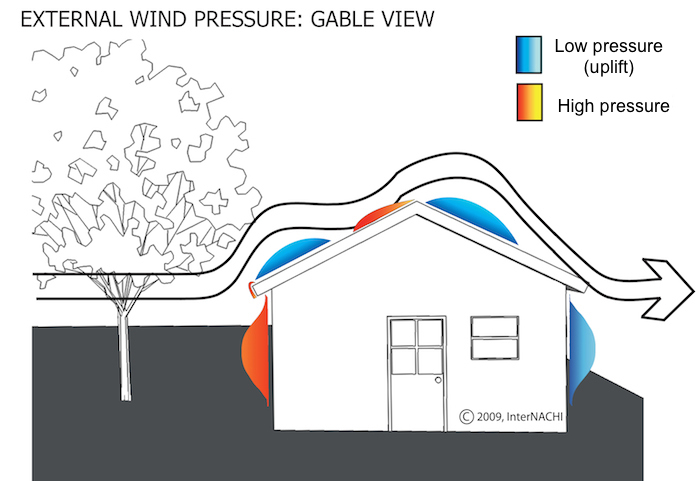

These illustrations show high and low pressure areas that develop as wind blows past a building.
You can tell quite a bit about the condition of an asphalt shingle roof by the type of damage you find. Sometimes, you don’t even have to look closely at the roof:
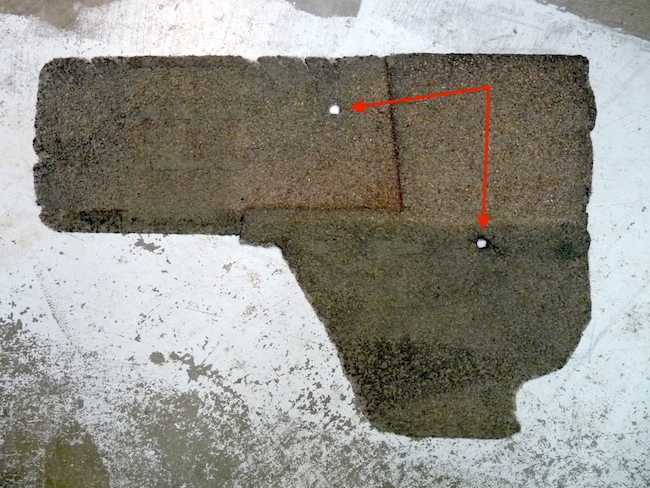
As you approach the home, you may find shingles on the ground. The shingle in the photo above was found on the ground and has holes where the shingles pulled over the heads of nails, indicating strong wind.
BONDING
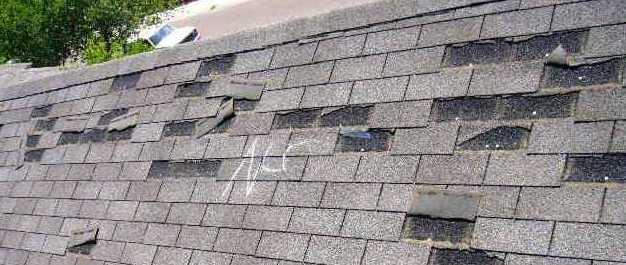
Poor bonding
- If you find individual shingles, roof bonding may be poor. If you find groups of shingles still bonded together, bonding may be acceptable.
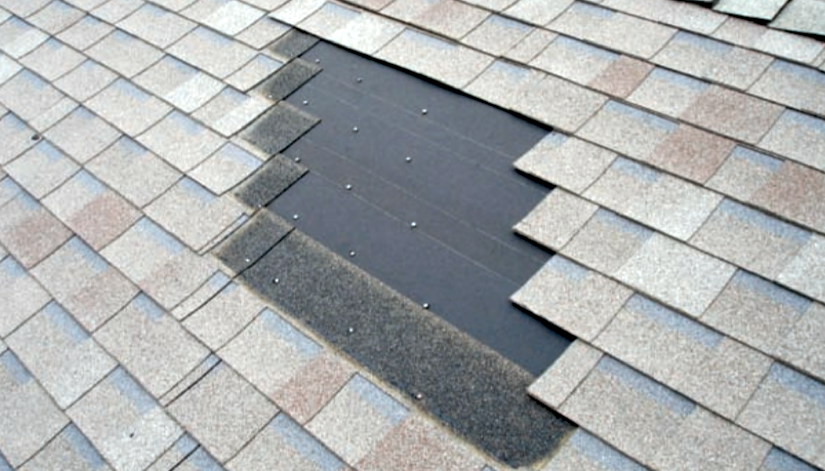
Good bonding but high-nailing
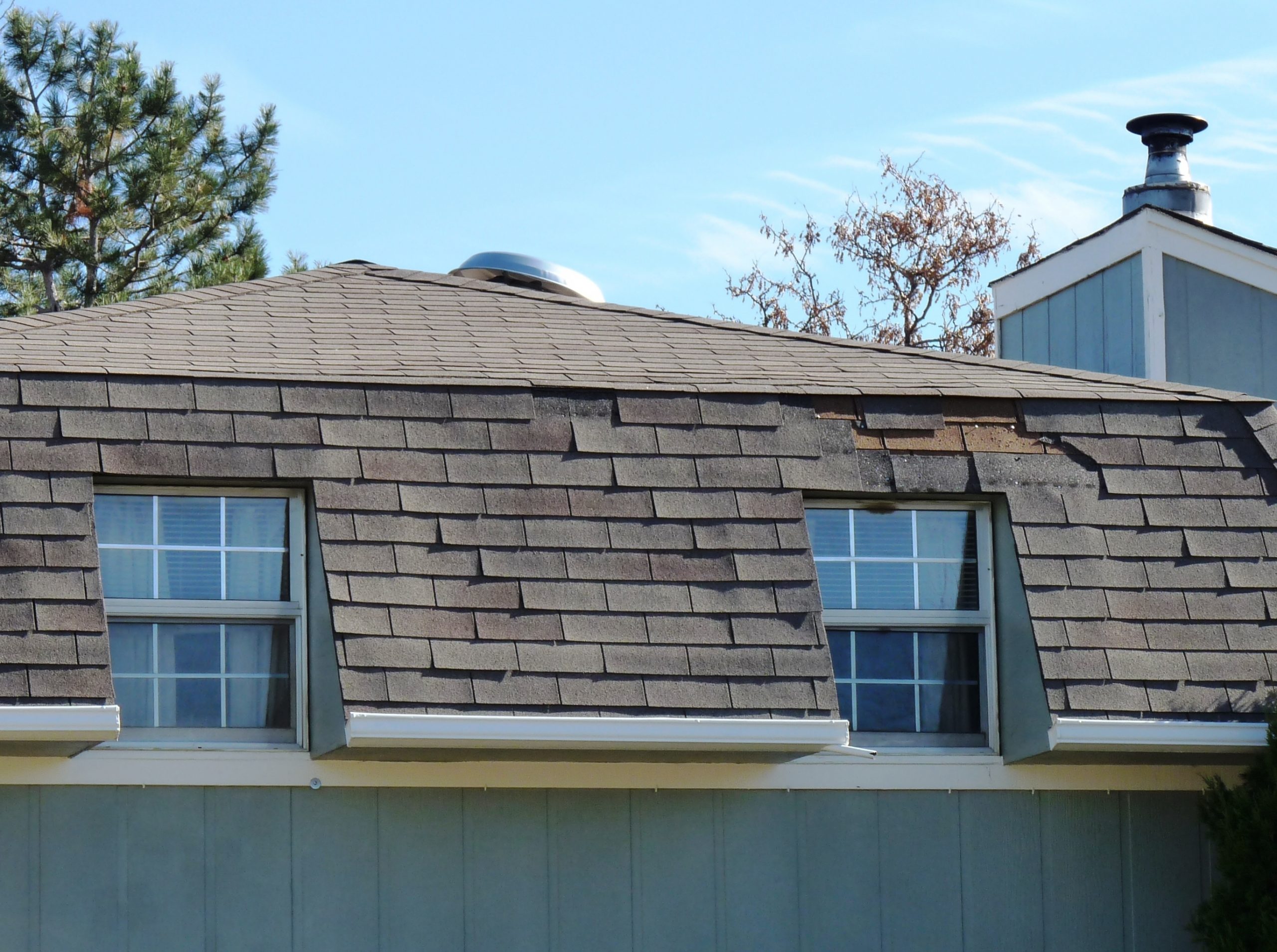
Shingles on steep roofs may never fully bond because of insufficient weight.
IDENTIFYING WIND DAMAGE
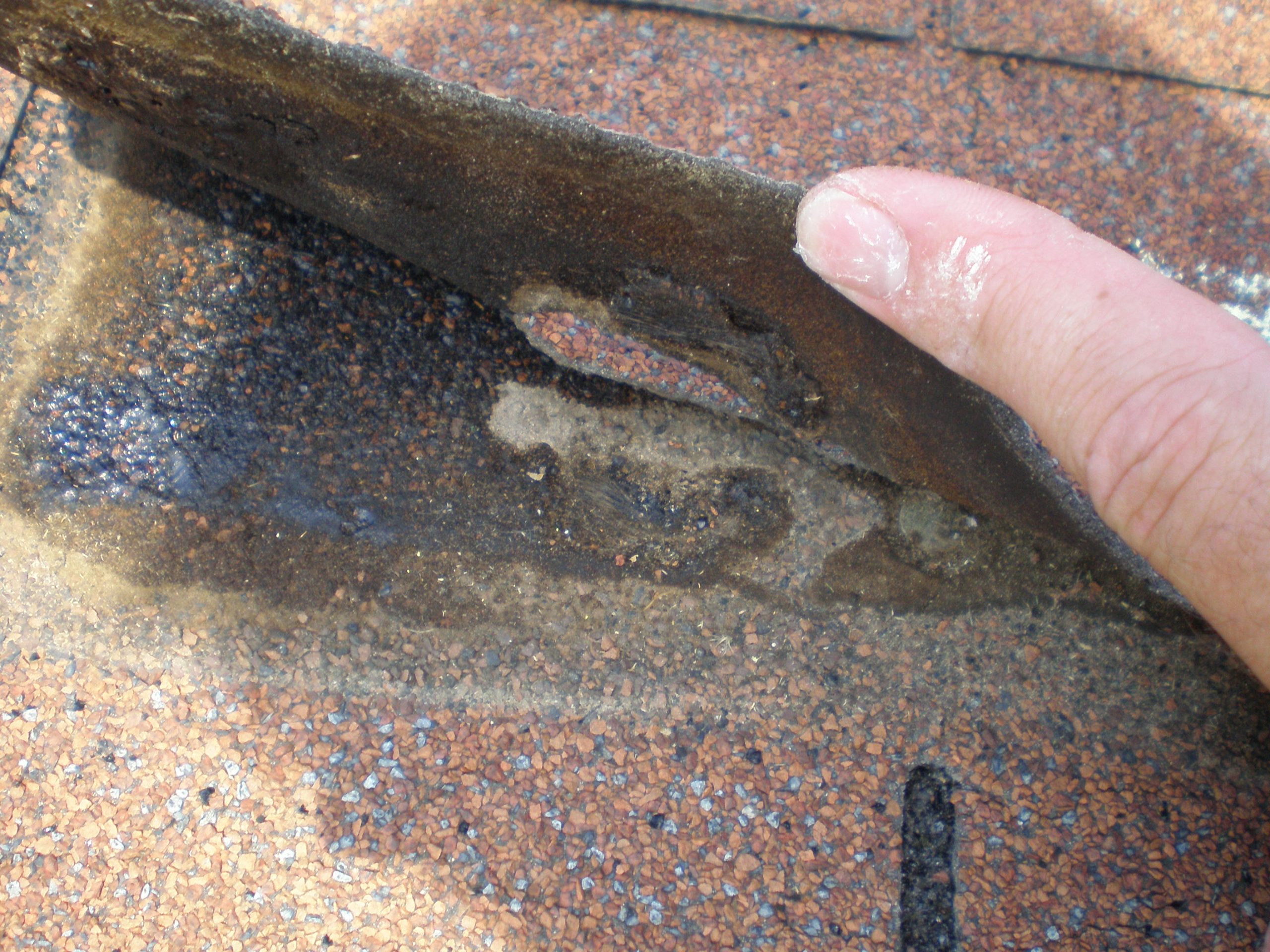
If when looking at the sealant strip you see portions of another shingle still adhered to the sealant (called "transfer"), that indicates intact bonding. The failure is either due to wind speeds that exceeded the shingle design, or improper fastening.
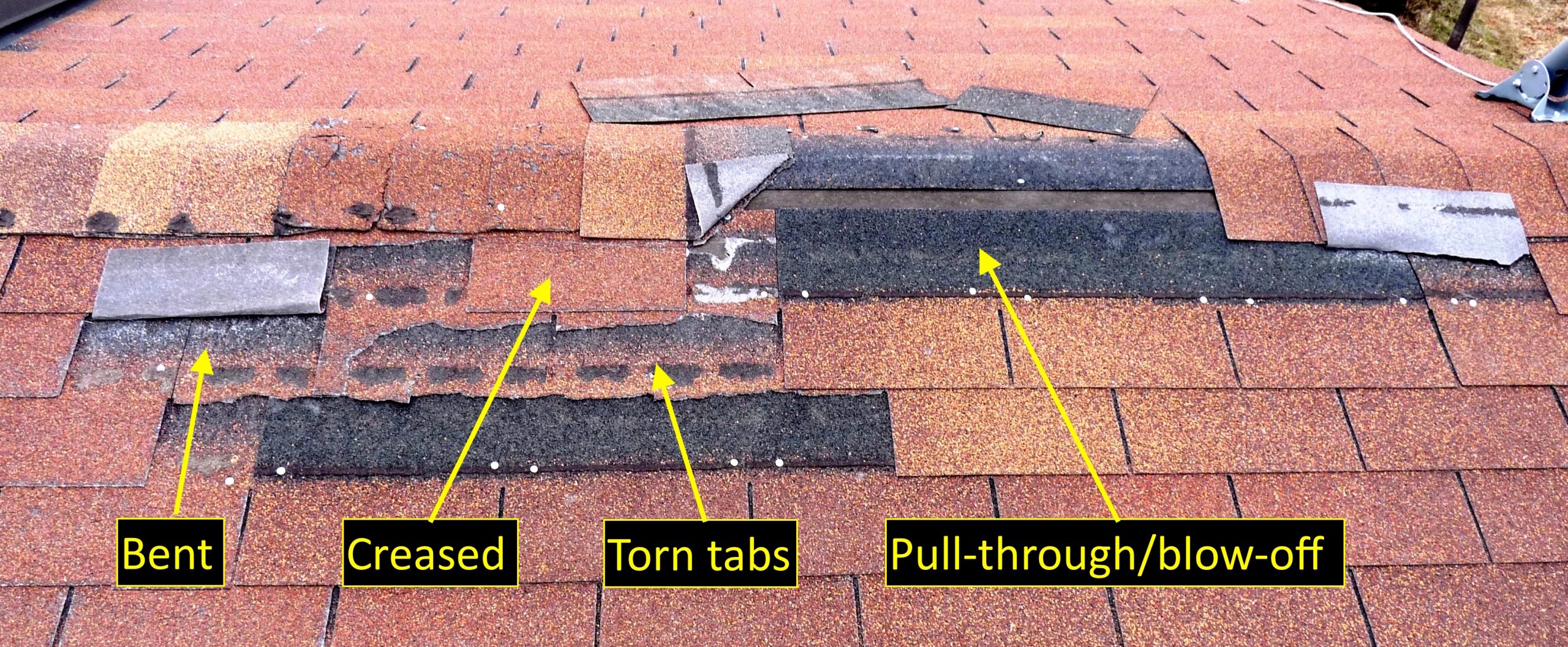
- Visual inspection of the roof will allow you to spot creased, flipped, or missing tabs, missing shingles, or groups of missing shingles. If you see:
- A few creased tabs, recommend hand-sealing of any damaged tabs.
- Bent back tabs, widely scattered across the roof, suspect failed bonding, especially if the tabs are located above joints between underlying shingles. Grouped damage indicates intact bonding.
WIND SPEED and DAMAGE
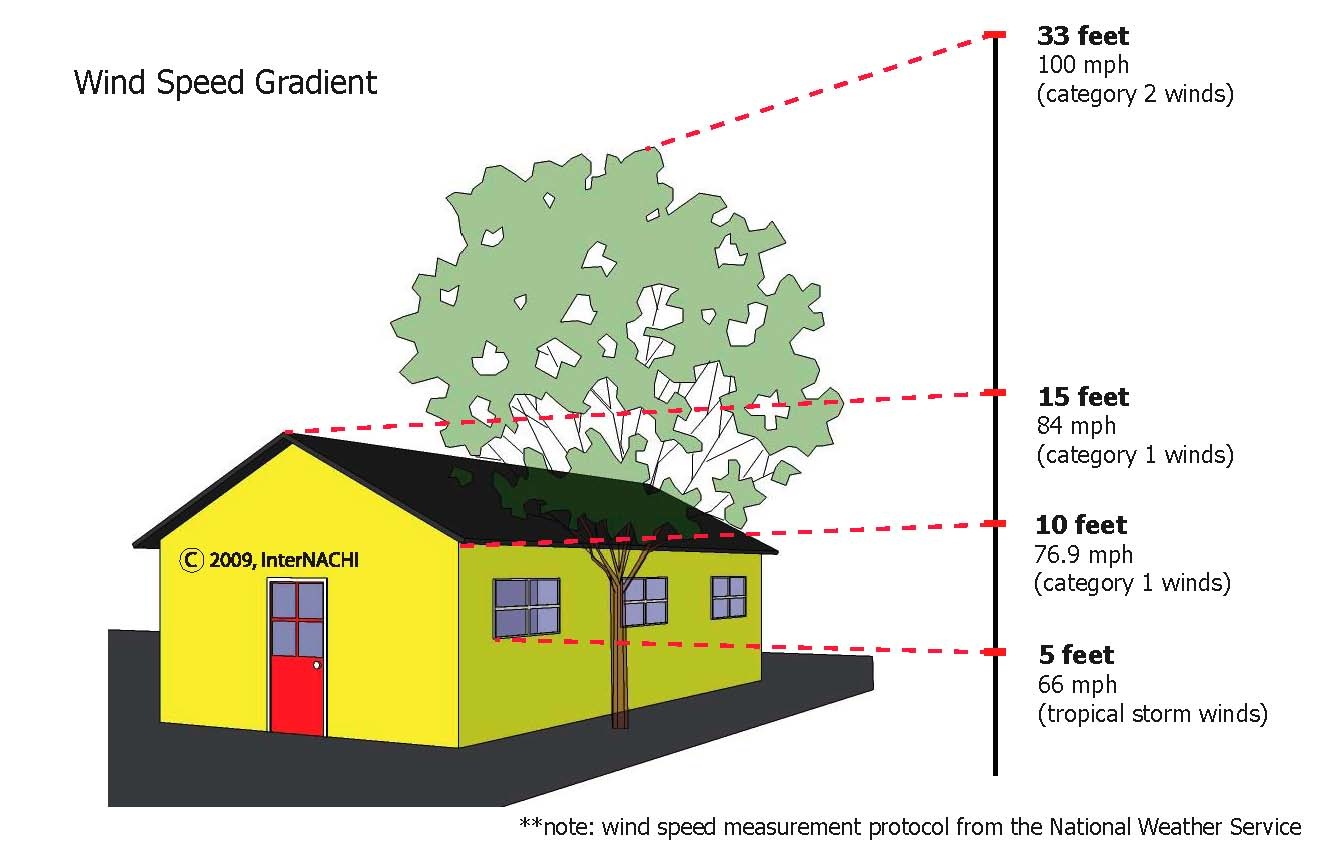
Wind speed increases rapidly with height
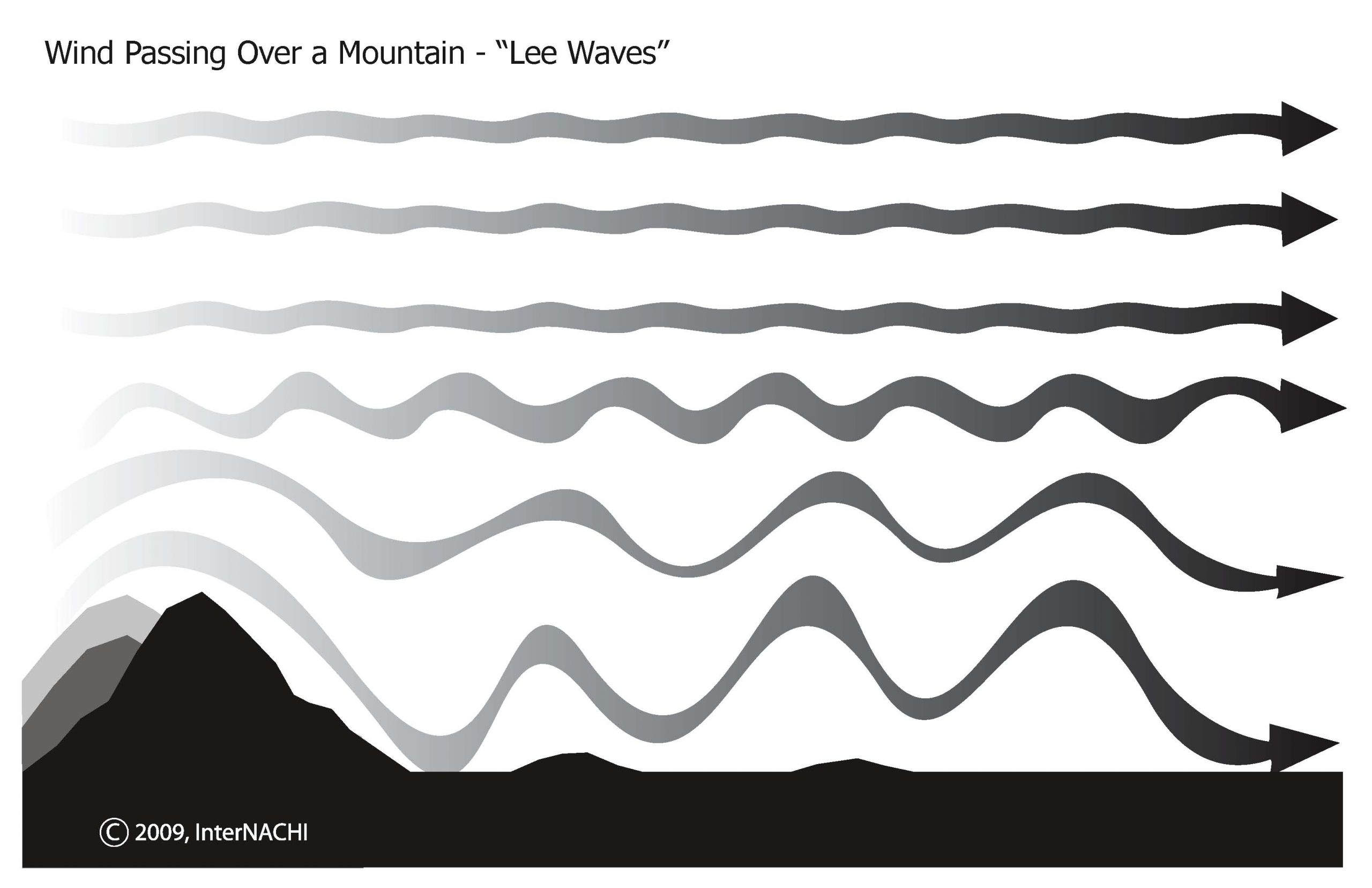
Topography can also affect levels of wind damage. Velocity increases where wind passes over mountains. On the lee (downwind) side of the mountains, wind near the ground will bounce before smoothing out.
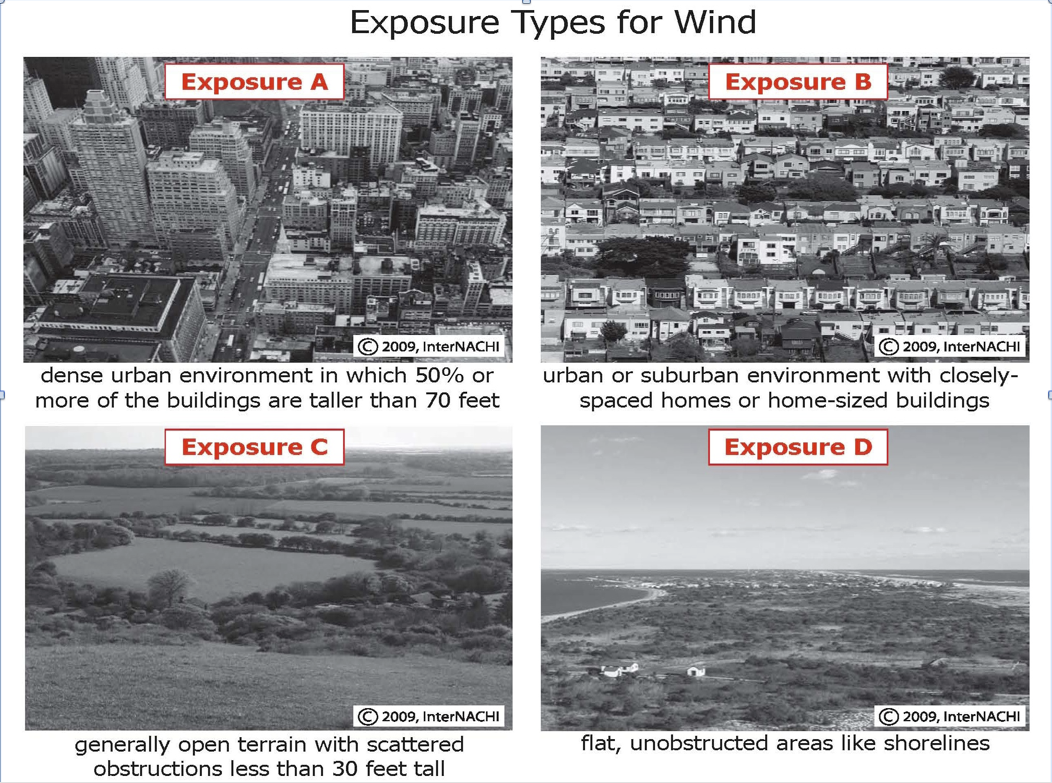
The exposure category also has an effect on wind speed. Wind speeds will be highest in Exposure D.
ROOF PITCH
Read the Mastering Roof Inspection section on Wind Damage
